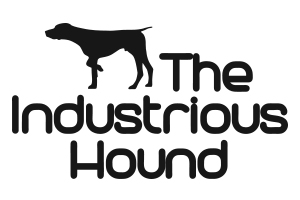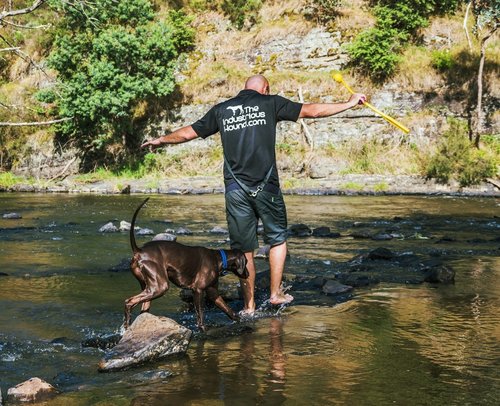Destructive chewing
Destructive or inappropriate chewing can be an upsetting and expensive behaviour as your dog works its way through your furniture, clothes, or remote controls!
But destructive chewing is commonly the manifestation of one or a combination of a handful of problems that you can effectively deal with.
Regardless of what you suspect is the cause of your dog's chewing, if you have a 'belt-and-braces' approach that tackles all the possible causes, you won't go far wrong.
Provide an appropriate outlet for chewing.
Chewing is part of your dog's natural behaviour, as it is with humans.
Chewing is positive, beneficial and healthy when the dog chews appropriate items, and so your dog needs an outlet for this behaviour.
There is a range of views about appropriate chew items and the associated risks and benefits of each. No activity is without some risk and some benefit. Seek contemporary, authoritative sources of information to reach a balanced view. Items like raw bones, chews, or specially designed objects, like items in the Kong range may be an appropriate outlet for chewing.
My view is that sticks, brittle toys, and cooked bones are inappropriate outlets for a number of reasons, some related to health and mitigating some risks, some more about my behavioural, system-based approach to life with dogs.
With this approach in mind, while the dog may appear to enjoy and get fulfillment from 'gutting' (ripping apart) an object or 'unwrapping' a 'Christmas present', for example, I personally do not add this behaviour to my dog's 'repertoire'.
Some approaches advocate training a dog to be destructive on command. I acknowledge that it is entirely possible to train a dog to be destructive on purpose. But I think this approach risks quickly tying people in behavioural knots and adds unnecessary complication to most people's life.
Instead, reward activities that are co-operative and entirely supportive of and consistent with your goals.
Control your resources. Be consistent and logical.
Only allow the dog access to 'your toys' and make sure 'toys' are appropriate and consistent with your goal.
Don't provide items made of materials that are like the items you don't want destroyed, like leather or wood, for example.
Don't allow the dog to have an old slipper and then be upset that he's chewed your new slippers!
You may also want to avoid toys that have squeakers. Squeakers can sometimes reinforce chewing or gutting because they add an additional stimulation for the dog, encourage the dog to 'get at' the squeaker, and the squeak can be rewarding. If your dog loves squeaky toys, consider using them judiciously as rare, high value rewards.
Provide mental stimulation.
Idle hands do the devil's work, and in this case idle minds destroy your home.
Dogs often try to exercise their mind and relieve their boredom by solving problems, and entertaining themselves.
Reduce your dog's need to seek its own mental stimulation by interacting meaningfully and appropriately with your dog in the right sort of places.
This can be in the home or garden, but consider making your home and garden a place of calm and quiet by taking your dog out to off-lead environments that allow your dog self-expression and where you can interact with them with games that get them to co-operate, make wise choices and solve problems.
Games are a great way to have fun with your dog and reinforce the behaviour you want. Good games might include retrieval or tracking games and agility, or new tricks.
Reduce your dog's stress.
Chewing has profound effects on the body's chemistry, and, as in humans, chewing is one way your dog tries to relieve stress.
A lot of your dog's stress and anxiety, including 'separation anxiety', is caused by inappropriate status in the social order, and by what you have inadvertently taught it to fear.
Often, this combination will have a dog almost permanently on alert and in a state of anxiety. For some dogs, stress and anxiety will manifest as barking, or digging, for example, and in others as chewing - or a toxic combination of behaviours. What a horrid way to live!
Your job as a dog owner is to be the most effective and competent dog in this dynamic social structure. By assuming this role your dog can trust your judgement and relax, knowing another member of the group is in charge and knows what to do.
You can quickly and effectively show your credentials when you set aside human ways of communicating and become aware of your own behaviour and its effect on your dog.
Learn to communicate in way that is meaningful for your dog, and adjust your behaviour and your interactions to allow your dog to let go of stress and anxiety.
If you would like training to deal with destructive chewing, or would like to learn to 'speak dog', get in touch!



